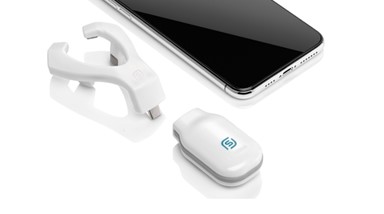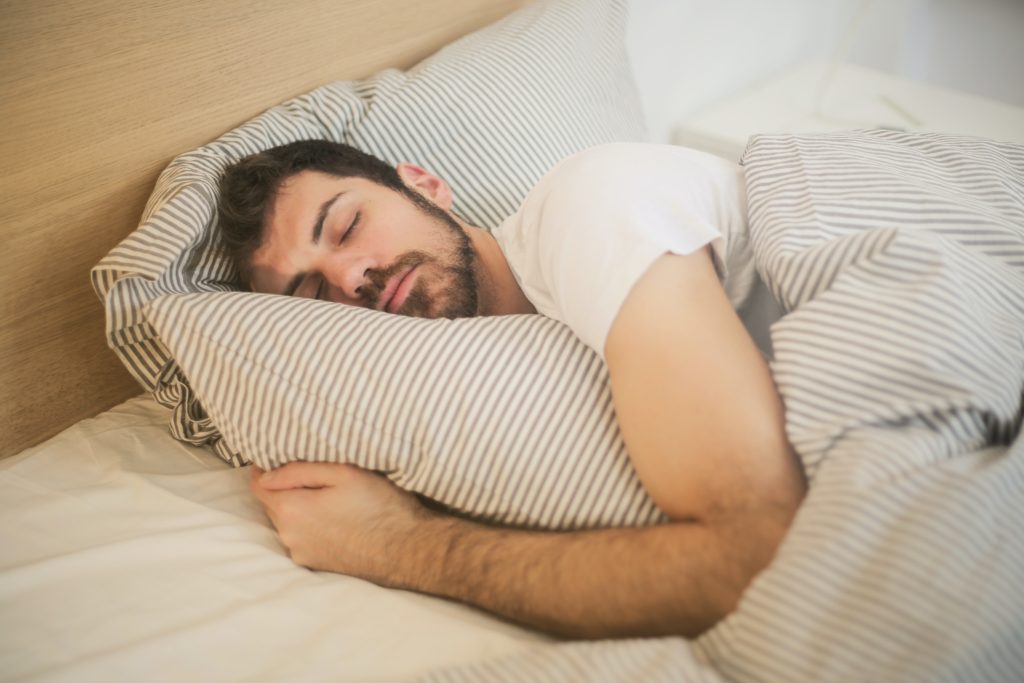The US Food and Drug Administration (FDA) has granted marketing authorization to Signifier Medical Technologies’ sleep apnea treatment device, called eXciteOSA.
The new device is designed to reduce snoring and treat mild obstructive sleep apnea (OSA) in individuals 18 years and older, and is available by prescription only.
Getting a restful night’s sleep is important for maintaining good physical and mental health. After insomnia, the second most common sleep disorder in the US is OSA, with approximately 22 million Americans suffering from the condition. Startlingly, almost 80 percent of people with moderate and severe sleep apnea don’t even realize they have it and go undiagnosed.
OSA is a sleep-disruptive breathing condition caused by a blockage in the upper respiratory system that leads to an individual to stop breathing for several seconds during the night. As a person sleeps, the airway is blocked by soft tissues in the throat that relax and collapse into it, preventing oxygen from reaching the lungs. While partial blockage usually results in snoring, full blockage leads to breathing cessation followed by gasps and chokes as breathing is restored.
Currently, the most common interventional treatment for OSA is continuous positive airway pressure (CPAP), which involves a mask that delivers a constant pressure of air that is a bit greater than that of the surrounding air to help keep the upper airway passages open while sleeping. Although a common and successful treatment, people often find the mask to be bulky, uncomfortable and loud. The eXciteOSA is a significantly more minimalist mouthpiece that has the advantage of being worn while awake, which is a first for OSA treatment devices.
eXciteOSA is the first device for sleep apnea that is designed to be used while awake and not asleep, unlike other traditional devices that are used while sleeping. It works to improve tongue muscle function, which over time, can help prevent the tongue from collapsing backwards and obstructing the airway during sleep.
If left untreated, OSA can lead to serious long-term health consequences including heart attack, heart failure, glaucoma, diabetes, cancer and cognitive and behavioral disorders.
Related: Here’s How the Nightware App Disrupts PTSD-Related Nightmares Without Compromising Sleep
The Apnea-Hypopnea Index (AHI) measures the severity of OSA by counting the number of apneas (pauses in breathing) plus the number of hypopneas (periods of shallow breathing) that occur, on average, each hour. Mild OSA is defined as an AHI score of more than five but less than 15.
OSA leads to significant sleep disruptions as the brain partially awakens in response to not breathing, forcing oneself to breath harder to get past the blockage. When this happens multiple times an hour, despite lasting only several seconds each time, the brain does not get the chance to drift into deeper, restorative phases of sleep which are important for tissue repair and cognitive function. Due to reduced sleep quality, individuals with sleep apnea are often tired the next day.
Moreover, the respiratory effort needed to continue breathing during a sleep apnea episode puts a strain on the heart, which can lead to cardiac problems such as heart attack and heart arrhythmias, among others.
“Obstructive sleep apnea not only impacts sleep quality, but can have other serious health impacts if untreated. Today’s authorization offers a new option for the thousands of individuals who experience snoring or mild sleep apnea,” said Malvina Eydelman, MD, director of the Office of Ophthalmic, Anesthesia, Respiratory, ENT and Dental Devices in the FDA’s Center for Devices and Radiological Health, in a FDA news release.
How it Works
The eXciteOSA device operates by delivering electrical muscle stimulation to the tongue via a removable mouthpiece. The mouthpiece has four electrodes with two positioned above the tongue and two located below. The tongue receives electrical muscle stimulation through a series of electrical pulses delivered in sessions that include rest periods in between. It is used once a day for 20 minutes during a wakeful state for a period of six weeks, and subsequently only once a week.
The safety and effectiveness of the eXciteOSA device was evaluated by the FDA in 115 patients that snore, including 48 patients with both snoring and mild sleep apnea. All of the patients used the device for 20 minutes, once a day for six weeks, then discontinued use for two weeks before reevaluation.

According to the study results, it was found that overall, the percent of time spent snoring at levels louder than 40dB was reduced by more than 20 percent in 87 out of the 115 patients. In the group with both snoring and mild OSA, in 41 out of the 48 patients, the average AHI was reduced by 48 percent, from 10.21 to 5.27. The most common adverse events observed were excessive salivation, tongue or tooth discomfort, tongue tingling, dental filling sensitivity, metallic taste, gagging and tight jaw.
“The eXciteOSA device is not intended for patients who have or are suspected of having OSA with an AHI of 15 and higher,” says the FDA.
The FDA and Signifier Medical Technologies recommend that patients receive a comprehensive dental examination before using the device. As per the FDA’s authorization, “the eXciteOSA device is contraindicated for patients with pacemakers or implanted pacing leads (electrodes); patients with temporary or permanent implants, dental braces, intraoral metal prosthesis/restorations/appliances or dental jewelry in the mouth; patients who are pregnant or may be pregnant; or patients suffering from ulcerations in or around the mouth.”
Signifier Medical Technologies LLC is focused on developing approaches that will help improve quality of life through sleep, particularly by addressing the root causes of snoring, which is caused by sleep apnea.
The eXciteOSA device was reviewed through the FDA’s de novo premarket review pathway, a regulatory pathway for low- to moderate-risk devices of a new type. Along with the authorization, the FDA says it is establishing special controls for these types of devices, including requirements pertaining to labeling and performance testing. Any future devices that are the same type may thus be eligible to go through the FDA’s 510(k) premarket notification process, whereby devices can obtain marketing authorization by demonstrating substantial equivalence to a predicate device.












Join or login to leave a comment
JOIN LOGIN